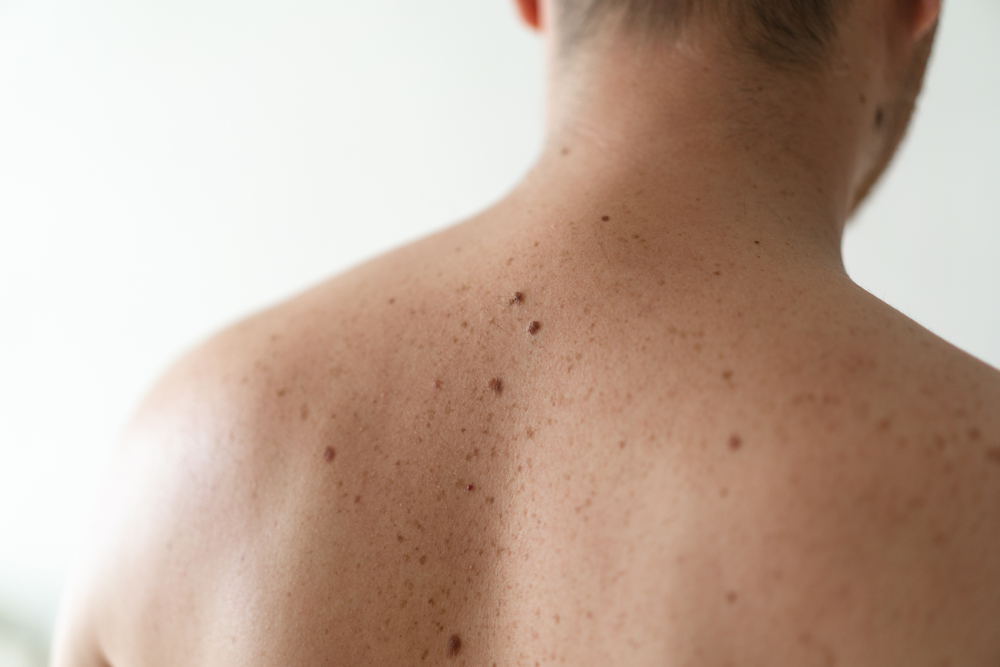Important Melanoma Warning Signs and Symptoms

Melanoma is a type of skin cancer that typically starts on skin that has been exposed to the sun. It can occur just about anywhere, including the arms, back, legs, and face. But how do you know what to look out for? Let’s take a look at some of the common signs and symptoms, as well as why catching melanoma early is so important.
Signs of Melanoma
The signs of melanoma have been given the acronym ABCDE (Asymmetry, Border, Color, Diameter, and Evolving). You should ask yourself the following questions when examining a mole that appears suspicious.
- Is my mole asymmetrical? Are there two parts of it that look completely different?
- Does my mole have an irregularly shaped border?
- Does my mole include different colors (tan, brown, and black)?
- Is my mole more than 6 millimeters in diameter?
- Has my mole evolved since I first noticed it? Has it grown in size?
If the answer to any of these questions is yes, you should consult with your dermatologist to have your mole examined. Sometimes, perfectly normal moles look irregular, so this may not mean that you have melanoma, but it’s always wise to have abnormal moles inspected by a professional.
Malignant Melanoma
Some types of melanoma don’t appear in the traditional ways listed above. Instead, they can present as an ordinary bruise that doesn’t heal or a brown streak under one of your nails. Be sure to visit a dermatologist if you notice moles that change over time, tender nodules under the skin, moles that display uneven colors, small scaly patches that don’t improve, or sores and rashes that don’t heal. Catching a malignant melanoma earlier ensures it’s easier to treat than it would be in later stages.
Melanoma On Your Scalp
Melanoma that appears on your scalp can be dangerous because it is more difficult to detect than melanomas that grow on open areas of skin. Additionally, melanoma on the scalp can grow quite a bit faster than in other areas since there are more blood vessels and tissues present on your scalp. Thankfully, performing regular scalp checks can help you detect strange spots that may be cause for concern.
Late Stage Melanoma
As melanoma progresses, patients will start to notice more painful or uncomfortable symptoms like bleeding, itching, oozing, and irritation. If you have a mole or other skin lesion that is causing this kind of discomfort, you should discuss it with a dermatologist as soon as possible.
What Happens If Melanoma Spreads?
Once melanoma spreads from the skin to other parts of the body, it’s referred to as metastatic melanoma. Most often, it will spread to the lungs, bones, liver, lymph nodes, or even the brain. In these cases, patients may experience swollen lymph nodes, headaches, seizures, pain in the bones, loss of appetite, fatigue, weakness, or difficulty breathing. Any of these symptoms should be taken seriously and discussed with your doctor immediately.
Schedule A Consultation
If you’re concerned about any moles you’re seeing on your skin, Dr. Shuana Diggs at Cosmedic Dermatology will examine the area for any irregularities and test a small portion of the skin if necessary.
Don’t wait to have any skin concerns checked out. Schedule a consultation today at our Grosse Pointe, MI office by calling 313-882-5777 or using our online contact form.




 |© 2018 Cosmedicderm |
|© 2018 Cosmedicderm |